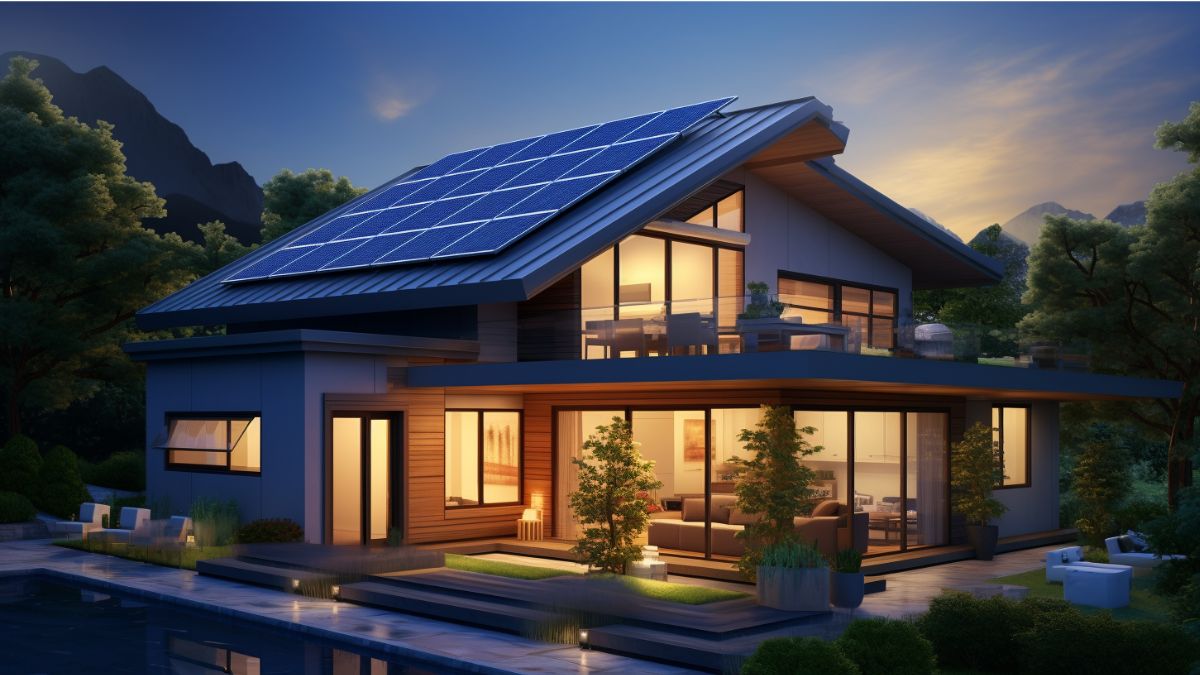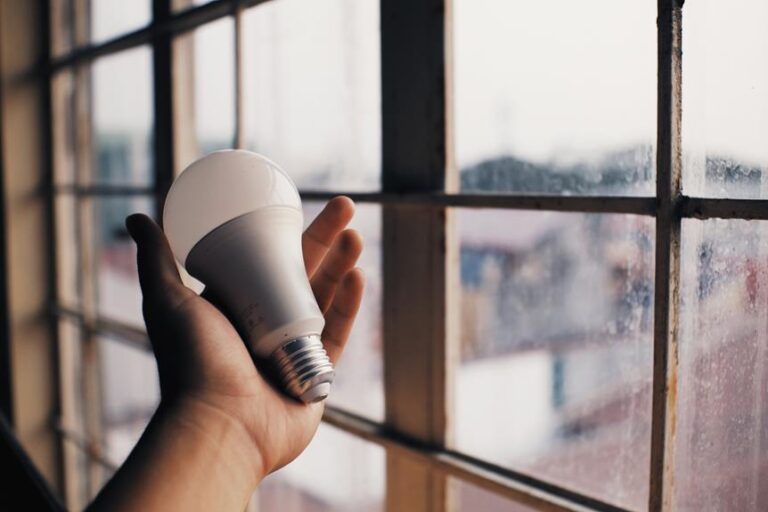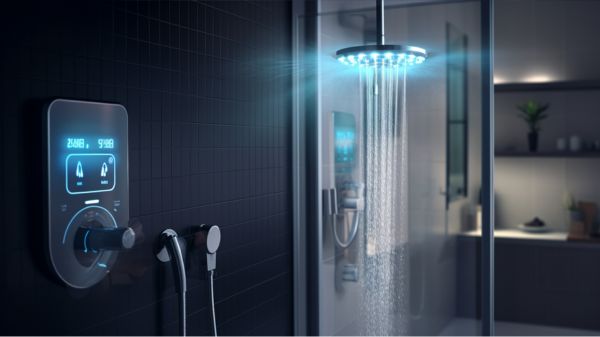Energy Efficiency at its Best: Upgrade for Savings
Tired of wasting money on sky-high energy bills? Ready to take control and make a positive impact on the environment? Look no further! Upgrade your home with these energy efficiency tips to save big bucks while shrinking your carbon footprint. The cherry on top? You may even qualify for tax credits and rebates.
From windows and doors to attic insulation and smart thermostats, we’ll show you how to embrace energy efficiency and create a cozy, eco-friendly haven you can truly call home.
Tips #1: Energy-Efficient Appliances and HVAC Systems
Upgrading to energy-efficient appliances and HVAC systems can help you save money on your monthly utility bills and reduce your environmental impact. Energy-efficient appliances use less electricity, resulting in lower energy costs. When you upgrade your HVAC system to a high-efficiency model, you can save even more on your heating and cooling expenses.
Additionally, homeowners who invest in energy-efficient appliances and HVAC system upgrades may be eligible for tax credits under the Inflation Reduction Act. These tax credits provide financial incentives for making environmentally-friendly choices.
Energy Efficiency Tips #2: Windows and Doors
To improve the energy efficiency of your home, consider replacing your old windows and doors with properly insulated ones. This upgrade can have a significant impact on reducing energy loss and improving temperature consistency in your home.
Here are three reasons why investing in window replacement and energy-efficient doors is a smart choice:
- Window replacement: Upgrading your windows to energy-efficient options can reduce heat transfer and drafts, resulting in lower heating and cooling costs.
- Energy efficient doors: Installing energy-efficient doors with proper sealing techniques can prevent air leaks and improve insulation, leading to energy savings.
- Insulation types and energy-efficient window treatments: Choosing the right insulation types, such as foam or fiberglass, and utilizing energy-efficient window treatments like blinds or shades can further enhance energy efficiency.
Energy Efficiency Tips #3: Attic Insulation
Adding insulation to your attic will help reduce energy loss and improve temperature consistency in your home. Attic insulation acts as a barrier, reducing the amount of air that enters or escapes your house.
Not only does this improve comfort, but it can also show a return on investment when selling your home. However, it’s important to choose the right type of insulation and ensure proper installation to maximize its effectiveness. Common insulation mistakes include leaving gaps or compressing the insulation, which can reduce its thermal performance.
While DIY installation is possible, professional installation ensures proper coverage and can save you time and effort. Consulting with an expert and considering the long-term benefits of attic insulation will help you make an informed decision for your home.
Energy Efficiency Tips #4: Smart Thermostats
You can optimize temperature settings and save money by installing one of energy-efficient appliances with a smart thermostat in your home. Smart thermostats offer a range of features that contribute to energy savings, such as customizable temperature schedules and geofencing capabilities. These devices are easy to install and compatible with most HVAC systems, making them a convenient addition to any home.
With a smart thermostat, you can analyze your energy usage and make informed decisions about your heating and cooling needs. By adjusting the temperature based on occupancy and optimizing settings, you can significantly reduce your energy consumption and lower your monthly utility bills.
Investing in a smart thermostat is a cost-effective way to enhance your home’s energy efficiency and create a more comfortable living environment.
Related Post: Saving Money with An Electricity Saver Device: The Ultimate Guide.
Energy Efficiency Tips #5: Tankless Water Heaters
Installing a tankless water heater can help you save on energy costs and provide hot water on demand. Tankless water heaters are more energy-efficient than traditional storage tank water heaters, saving up to 34% in energy consumption. They only heat water as needed, reducing standby energy loss.
The installation process for a tankless water heater involves connecting the unit to your existing plumbing system and ensuring proper venting. Regular maintenance is important to ensure optimal performance, such as descaling the unit and checking for any leaks.
When compared to traditional water heaters, tankless water heaters have a higher upfront cost, but they’ve a longer lifespan and can provide significant energy savings over time. Consider the benefits and costs when deciding between a tankless water heater and a traditional one.
Tips #6: Consider Return on Investment
When considering home remodeling projects, it’s important to focus on those that provide a good return on investment (ROI). Making the right choices can have a significant financial impact and improve the overall value of your home. To help you with your investment evaluation, here are three key considerations:
- Cost benefit analysis: Before starting any project, conduct a thorough cost benefit analysis to determine the potential profitability. Consider factors such as the initial cost, expected increase in home value, and potential savings in energy costs.
- Consult local experts: Seek insights from local real estate agents who’ve a deep understanding of your market. They can provide valuable guidance on which upgrades yield higher returns in your specific neighborhood.
- Choose wisely: Different projects have varying ROI potential. For example, adding a new bathroom may cost $50,000 but only increase home value by 54%. On the other hand, a minor kitchen remodel can recoup about 78% of its cost. Prioritize projects that offer the highest ROI to maximize your investment.
Energy Efficiency Tips #7: Create a Budget
To ensure a smooth home remodeling project, it’s crucial to create a budget that allows you to stay on track financially. Here are some tips to help you with this process.
First, calculate your expenses before starting the project. Use project estimate calculators or websites like HomeAdvisor to get an idea of the cost. It’s also wise to add 10% or 20% to the total to account for any unexpected cost overruns.
Next, consider your financing options. If you’ve cash on hand or savings, that can fund your project without paying interest. However, if you need additional funds, explore options like home equity lines of credit, personal loans, cash-out refinancing, or credit cards. Take into account the interest rates and repayment duration when choosing the right financing option.
Once you’ve your budget and financing sorted, research contractors to find the best fit for your project. Obtain written estimates, check references, and verify licenses and credentials. Additionally, make sure to secure the necessary permits to protect your home and ensure compliance with local building codes.
Tips #8: Choose the Right Funding Option
If you need additional funds for your home remodeling project, you can explore financing options like home equity lines of credit, personal loans, cash-out refinancing, or credit cards.
Here are some alternative funding options to consider:
- Home Equity Lines of Credit: Tap into the equity of your home and use it as collateral for a line of credit. This option usually offers lower interest rates compared to other financing options.
- Personal Loans: Borrow a fixed amount of money and repay it over a fixed period of time. Personal loans often have higher interest rates but can provide a quick source of funding.
- Cash-Out Refinancing: Refinance your mortgage and take out additional cash. This option allows you to benefit from lower interest rates and extend your repayment duration.
When choosing a financing option, consider factors such as interest rates, repayment duration, and home improvement financing tools available to make an informed decision.
Tips #9: Research Contractors
Now that you’ve decided to upgrade your home for energy efficiency, it’s important to research contractors who can help you with the project. Researching contractors has several benefits, such as ensuring that you find reliable and experienced professionals who can deliver high-quality work. By selecting the right contractor, you can also have peace of mind knowing that your project will be completed efficiently and within budget.
When researching contractors, consider factors such as their references, credentials, and licenses for the specific work you require. It’s also a good idea to inquire about their membership in professional trade associations as it demonstrates their commitment to industry standards. Checking the Better Business Bureau ratings and resolution of complaints can further help you make an informed decision.
Additionally, make sure that your contractor has obtained the necessary permits before starting the work. Permit requirements are essential for protecting your home and ensuring compliance with local building codes. Failure to obtain permits may not only affect the quality of the renovation but also impact future home sales.
Furthermore, when selecting contractors, it’s crucial to discuss the price/quality trade-offs of materials. Finding the right balance between cost savings and material quality is important to ensure long-term durability and energy efficiency. Prioritizing quality materials within your budget can enhance the aesthetics and market value of your home.
Tips #10: Secure Home Renovation Permits
When securing home renovation permits, ensure that you’ve obtained all the necessary documentation to protect your home and comply with local building codes. This includes understanding permit requirements, navigating the permit process, and being aware of any permit fees that may apply.
Compliance with building codes is essential to ensure the safety and structural integrity of your home. Obtaining permits not only keeps you in compliance with the law but also offers several benefits. It provides assurance that your renovation meets safety standards, protects your investment by avoiding potential fines or legal issues, and can increase the value of your home.
Tips #11: Understand Price/Quality Trade-Offs
To make informed decisions about materials and balance cost with quality, prioritize discussing price/quality trade-offs with your contractor. Comparing costs and benefits is essential in finding the sweet spot between price and quality.
When upgrading for energy efficiency, it’s crucial to balance your budget and quality to maximize the benefits. Investing in energy efficiency offers long-term savings and increases the value of your home. However, it’s essential to weigh the pros and cons of different energy-efficient options to find the right balance between cost and performance.
Making informed decisions for energy efficiency upgrades requires considering both the quality and affordability of the materials and equipment. By understanding price/quality trade-offs, you can make smart choices that enhance energy efficiency while staying within your financial constraints.
Energy Efficiency Tips #12: Insulation
Ensure your home is properly insulated to maintain comfortable temperatures and reduce heating and cooling costs. Insulation plays a crucial role in creating a thermal barrier that keeps your home cozy in winter and cool in summer.
Here are three benefits of insulation:
- Increased energy efficiency: Proper insulation reduces heat transfer, minimizing the need for heating and cooling, thus saving money on energy bills.
- Soundproofing: Insulation not only keeps your home comfortable, but it also helps reduce noise transmission from outside, creating a peaceful indoor environment.
- Improved indoor air quality: Insulation helps seal air leaks and prevents the infiltration of pollutants, allergens, and outdoor contaminants, promoting healthier indoor air.
When it comes to installation, you’ve the choice between DIY and professional installation. DIY can save costs, but professional installation ensures proper coverage and effectiveness, especially in different climates and for soundproofing purposes. Prioritize quality and consider consulting experts to achieve optimal results.
Energy Efficiency Tips #13: Radiant Barrier
To further improve the energy efficiency of your home, consider installing a radiant barrier. A radiant barrier is a reflective material that is added to your roof deck or attic ceiling. It works by reflecting heat instead of absorbing it, which helps to keep your home cooler and reduces the need for excessive air conditioning. When combined with insulation, a radiant barrier can significantly enhance energy efficiency and provide additional cost savings.
One of the benefits of radiant barrier installation is its cost effectiveness. It extends the life of your roof and helps to lower your energy bills. Additionally, radiant barriers are relatively easy to install, making it a potential DIY project for homeowners.
When comparing radiant barrier vs insulation, it’s important to note that they work together to improve energy efficiency. While insulation primarily helps to reduce heat transfer, a radiant barrier reflects the heat away from your home. Both are valuable components in creating a well-insulated and energy-efficient space.
Consider adding a radiant barrier to your home to maximize energy savings and create a more comfortable living environment. See the table below for a comparison of radiant barrier installation and insulation.
| Radiant Barrier | Insulation | |
|---|---|---|
| Installation | Easy | Requires professional installation |
| Cost effectiveness | Provides cost savings over time | Reduces energy bills |
| DIY installation | Possible | Requires professional installation |
| Energy efficiency | Reflects heat away from the home | Reduces heat transfer |
| Additional benefits | Extends roof life, keeps attic cooler | Improves temperature consistency |
Tips #14: Window Caulking and Weather-Stripping
Properly sealing your windows with caulk and weather-stripping is a simple and cost-effective way to prevent air leaks and reduce wasted heating and cooling expenses. By taking these energy-saving techniques into your own hands, you can make your home more energy efficient and save money in the long run.
Here are three weatherization tips to get you started:
- DIY weather stripping: Seal any gaps or cracks around your windows and doors with weather stripping to prevent air leaks. This simple and inexpensive technique can make a big difference in improving your home’s energy efficiency.
- Caulking and insulation techniques: Use caulk to seal any gaps or cracks in your window frames and apply insulation around the edges to further prevent air leaks. This will help maintain desired temperatures in your home and reduce energy waste.
- Energy efficient home improvements: Consider upgrading to energy-efficient windows and doors, which can provide better insulation and further reduce energy loss. Look for windows and doors that meet ENERGY STAR requirements for maximum efficiency.
Tips #15: Dual-Pane Windows and Siding Replacement
You can improve the insulation of your home by considering dual-pane windows and replacing old siding.
Dual-pane windows, with their argon gas-filled space between two glass panes, reduce heat loss and improve energy efficiency. Sears offers vinyl dual-pane windows for installation.
Siding replacement is necessary for substantial energy savings. Patching up siding doesn’t significantly improve energy efficiency, but installing ¾-inch foam insulation behind new siding enhances the energy efficiency of the entire home.
When comparing the costs, dual-pane windows and siding replacement may require an upfront investment, but the long-term energy savings can outweigh the initial expenses. Additionally, these upgrades contribute to a more sustainable environment by reducing energy consumption.
To maintain the performance of dual-pane windows and siding, regular cleaning and inspections are essential. By taking these steps, you can enjoy the benefits of improved insulation, lower energy costs, and a more comfortable living space.
Related Post: Building An Energy Efficient Home: Green Living Made Easy.
Conclusion
Upgrade your home for savings and embrace energy efficiency at its best. Did you know that by upgrading to energy-efficient appliances and HVAC systems, you can reduce your carbon footprint by an average of 3,000 pounds of CO2 emissions per year? That’s equivalent to planting 43 trees or not driving 3,000 miles!
Make a positive impact on the environment while saving money on your energy bills. Start your energy-efficient upgrades today and be a part of the solution.







3 Comments
Comments are closed.